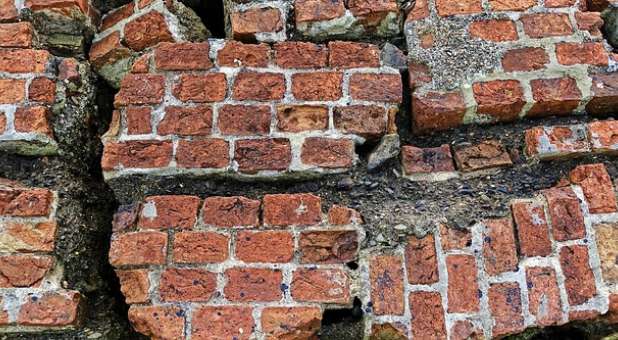Scientific Proof for Significant Biblical Earthquake
In its ongoing effort to catch up to the Bible, science has finally discovered evidence of the catastrophic earthquake that the prophets Amos and Zechariah described. In an article titled “Fact Checking the Book of Amos,” Haaretz explores the proof that such an earthquake did indeed occur.
“The words of Amos, who was among the shepherds of Tekoa, which he saw concerning Israel in the days of Uzziah king of Judah and in the days of Jeroboam the son of Joash king of Israel two years before the earthquake” (Amos 1:1).
King Uzziah’s reign was purported to be the most prosperous—excepting that of Jehoshaphat—since the time of Solomon. He acted properly in the early part of his reign and was considered a righteous king. Later, he became haughty due to his success. He entered Solomon’s Temple, attempting to offer up incense in an act that usurped the position of the priests. An enormous earthquake struck and Uzziah was smitten with leprosy.
Not only was the earthquake described in the opening verse of Amos quoted above, but it was also mentioned by the Prophet Zechariah.
“And you will flee to my mountain valley, for the mountain valley will reach to Azal. You will flee just like you fled from the earthquake in the days of Uzziah king of Judah. Then the Lord my God will come and all His holy ones with you” (Zech. 14:5).
Earthquakes appear to have been common in Israel during the Second Temple era as indicated in the prayer of the high priest on Yom Kippur. The high priest included a special wish that the people who lived in Samaria should be spared the fate of “having their houses become their graves.”
In the previous verse, Zechariah described what many Jews see as a pre-Messiah earthquake that will transform the topography of Jerusalem.
“On that day His feet will stand on the Mount of Olives, which is to the east of Jerusalem. And from east to west the Mount of Olives will be split in two halves by a very great valley so that one half moves to the north and the other to the south” (Zech. 14:4).
Though Israel has been hit by several small earthquakes in the past year, a powerful quake like the one described by Amos in the time of King Uzziah or one that divides the Mount of Olives has yet to hit the capital of Israel.
Supporting the account of the Bible is a wealth of archaeological data indicating widespread destruction in the region in the eighth century BCE. Much of the destruction could be attributed to the conquest of the Assyrians but Professor Wolfgang Zwickel of the University of Mainz pointed out that universal destruction does not necessarily indicate war. Any cities that submitted to a superior enemy would be spared. But if all the cities in a large area indicate simultaneous destruction levels, it is more likely the cause was a natural catastrophe like an earthquake.
This was further supported by findings at a dig in Hazor by Professors Israel Finkelstein and Yigal Yadin, who found a level of destruction corresponding to 760 BCE. At another dig at Lachish, David Ussishkin found a destruction level from the same time. Acre also has a similar layer dating to the mid-eighth century BCE.
In fact, geological analyses of archaeological evidence by Kate Raphael and Amotz Agnon of Hebrew University conclude there were 11 quakes in the Bronze and Iron ages in Israel, two in the eighth century BCE. Using carbon-14 dating of organic matter found in core samples taken from the Dead Sea, scientists dated one quake to 861-705 BCE. and the second to 824-667 BCE. Prof. Zwickel suggested that the prophet was referring to the stronger of the two.
According to Steven A. Austin, a Creationist Professor of Geology, the magnitude of this earthquake may have been at least 7.8, but more likely as high as 8.2. “This magnitude 8 event of 750 B.C. appears to be the largest yet documented on the Dead Sea transform fault zone during the last four millennia.”
Haaretz also noted that the earthquake was described by Josephus Flavius, a first-century Romano-Jewish scholar. Josephus described the earthquake as taking place during the time of King Uzziah (also referred to as Azariah), who is believed to have ruled over Judah from 787 to 736 BCE.
“A great earthquake shook the ground, and a rent was made in the temple, and the bright rays of the sun shone through it, and fell upon the king’s face; insomuch that the leprosy seized upon him immediately,” Josephus wrote. “And before the city, at a place called Eroge, half the mountain broke off from the rest on the west.”
Despite the wealth of scientific evidence supporting the biblical account of the earthquake, the article in Haaretz opens with the declaration, “It is rare to find evidence supporting the biblical narrative,” and concludes that the prophet Zechariah was not a reliable source when referring to the earthquake.
“At the end of the day, what we have is evidence of two strong quakes in the eighth century BCE, which support the biblical account in Amos, and Zechariah too,” Haaretz wrote. “Not that he knew of what he spake, writing so long after the event, but still.” {eoa}
Breaking Israel News offers a fresh and biblical perspective on the latest news from Israel and the Middle East. Our bias is not liberal nor conservative—just biblical.
This article originally appeared at breakingisraelnews.com.













































